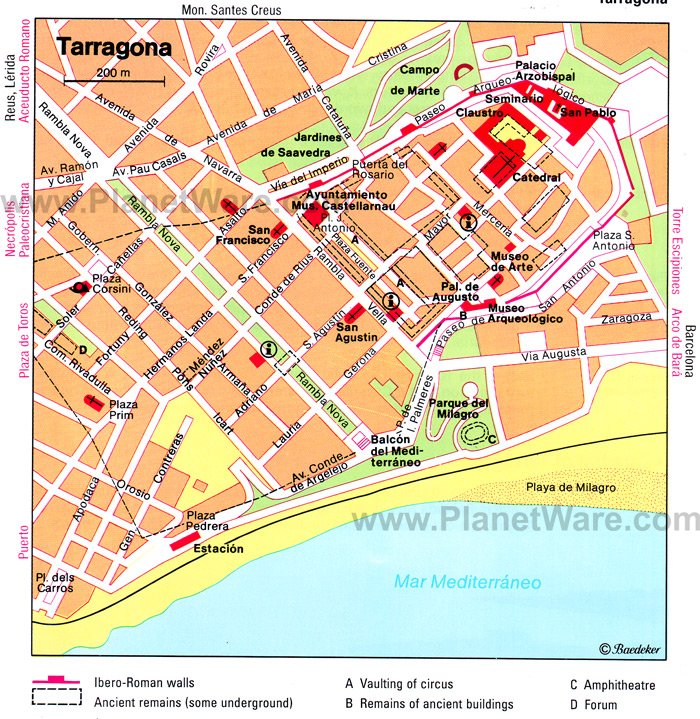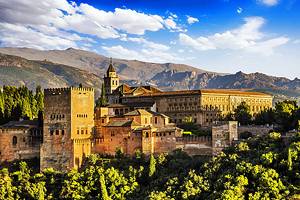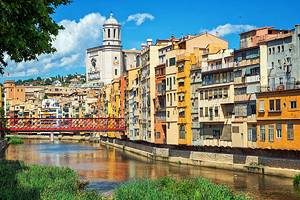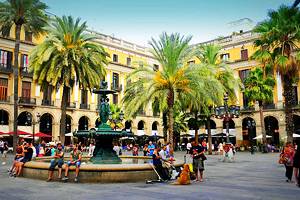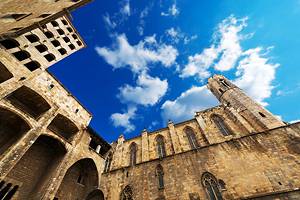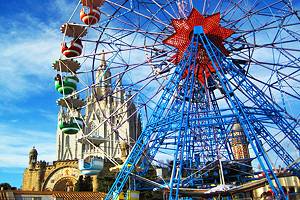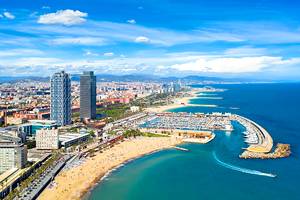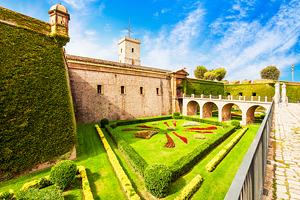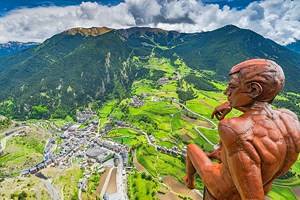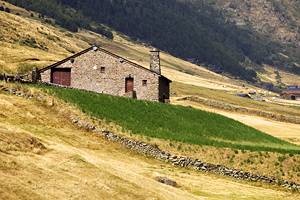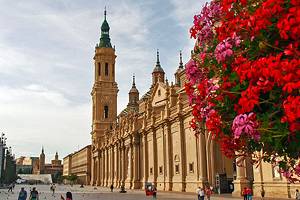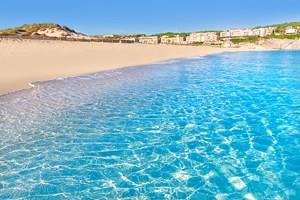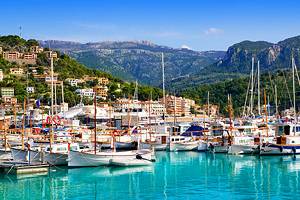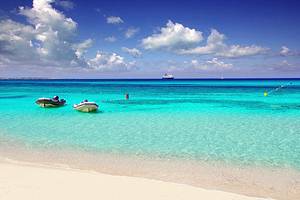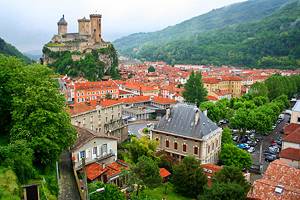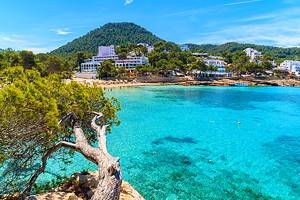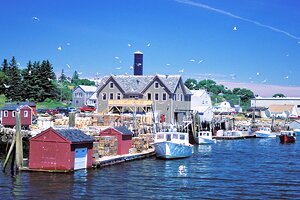13 Top-Rated Attractions & Things to Do in Tarragona
Tarragona is blessed with sunshine, a beautiful coastline, and interesting ancient monuments. The city extends along Catalonia's Costa Dorada, prized for its sandy beaches. El Milagro Beach is within walking distance of the main landmarks.
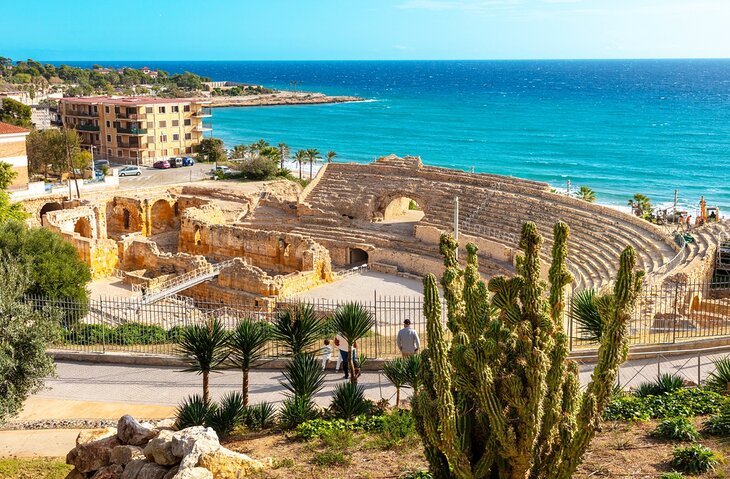
Layer upon layer of history is everywhere, from the UNESCO-listed Roman ruins to the medieval alleyways and cobblestone streets and the Romanesque-Gothic cathedral.
To soak up the old-world ambience, head to El Serrallo. The quarter represents the little fishing village that grew into the big city that is now Tarragona. In this atmospheric neighborhood, you can take a scenic stroll and enjoy delicious fresh seafood at one of the waterfront restaurants.
One of the best places to visit in Spain's Catalonia region, Tarragona offers both natural beauty and culture. Plan a fabulous sightseeing itinerary with our list of the top tourist attractions and things to do in Tarragona.
See also: Where to Stay in Tarragona
- 1. Catedral de Tarragona
- 2. Roman Amphitheater
- 3. Paseo Arqueológico
- 4. Balcón del Mediterráneo
- 5. Museu Nacional Arqueològic de Tarragona
- 6. Roman Forum
- 7. El Serrallo: An Old Fishing Village
- 8. Casa Castellarnau
- 9. Playa del Milagro
- 10. Pretty Avenues and Public Squares
- 11. Acueducto Pont de les Ferreres (Roman Aqueduct)
- 12. Gaudí Centre in Reus
- 13. Head to the Beach Resort of Salou
- Where to Stay in Tarragona for Sightseeing
- Map of Attractions & Things to Do in Tarragona
1. Catedral de Tarragona
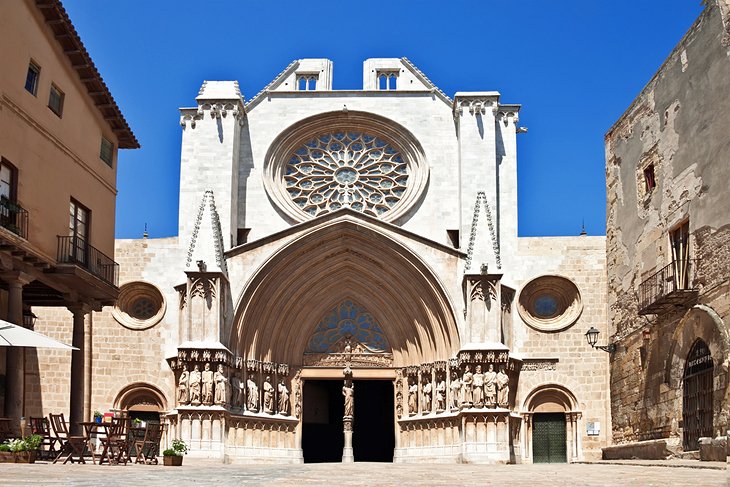
The Cathedral of Tarragona is one of Catalonia's largest and most magnificent churches. This classified monument "of Cultural Interest and Heritage" was built in the 12th century on the site of a 10th-century Moorish mosque.
Construction of the building continued over several centuries, explaining the blend of architectural styles. The architecture reveals the transition from Romanesque to Gothic.
The main facade features an early 14th-century Gothic portal with highly detailed sculptures and a stunning rose window with openwork tracery. An austere ambience defines the domed interior, which is illuminated by 16th-century stained-glass windows.
The Capilla Mayor (Central Nave) centers around a marvelous 15th-century altarpiece by Pere Johan, considered a masterpiece of Catalan Gothic carved stonework. Intricately crafted from polychromatic alabaster, the piece incorporates a trilogy of statues that represent the Virgin and Child, Saint Thecla, and Saint Paul.
Another artistic gem is the Plateresque Capilla de Santa María (Chapel of Saint Mary Magdalene), dating to the 16th century. This ornate chapel is noteworthy for its retablo dedicated to the Virgin Mary, which was painted by Francesc Olives around 1536.
Address: Pla de la Seu, Tarragona
Read More: Top-Rated Day Trips from Barcelona
2. Roman Amphitheater
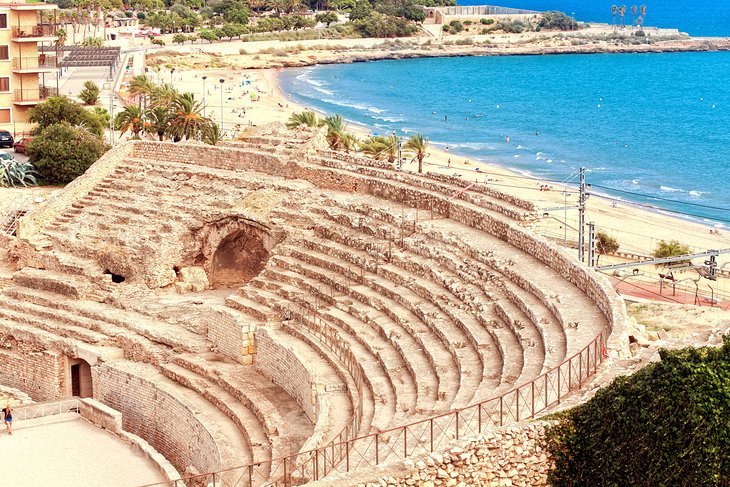
Vestiges of classical Roman buildings are dotted all over Tarragona, which after Mérida is the second most important archaeological site in Spain. The Roman Amphitheater, along with other ancient Roman ruins in the area, is designated as a UNESCO World Heritage Site.
The ancient Roman Amphitheater is the most impressive of Tarragona's ancient remains. Built on a hillside overlooking the Mediterranean Sea, the amphitheater dates back to the 2nd century CE during the reign of Emperor Augustus.
The immense stadium staged gladiatorial games, as well as other spectacles that entertained the Roman population. In its sloping rows of seats, the amphitheater could accommodate 14,000 spectators.
The amphitheater was also the scene of the martyrdom of Bishop Fructuosus in CE 259.
Beneath the arena are pits that were used for behind-the-scenes production of the events. In the center of the amphitheater are remains of a 6th-century Visigoth basilica.
Address: Parc de l'Amfiteatre Romà, Tarragona
Read More: Best Places to Visit in Northern Spain
3. Paseo Arqueológico
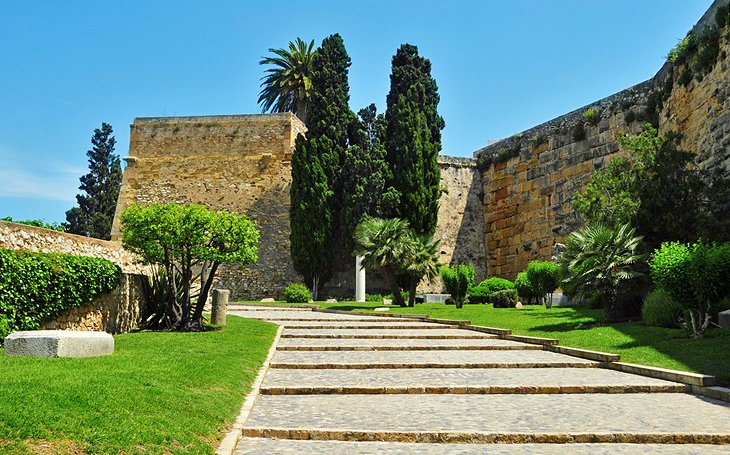
The Paseo Arqueológico walking path invites leisurely strolls in a lush garden setting. The landscaping features palm trees, cypresses, and other Mediterranean vegetation. Some corners of the gardens provide welcome shade on sunny days.
The path skirts the base of the Muralla Romana (Roman Wall), which was built from the 3rd to the 2nd century BCE and originally enclosed the entire ancient town. Several sections of the Muralla Romana are still intact, including one stretch that extends for 1,000 meters. Along the way, you will find replicas of ancient statues.
Three towers of the ancient Roman Wall have survived: the Cabiscol Tower, Minerva Tower, and Arzobispo Tower. The Minerva Tower is an excellent example of Roman architecture, and the Arzobispo Tower was altered during the Middle Ages.
The Paseo Arqueológico begins where the Vía del Imperio (Imperial Way) runs into the Puerta del Rosario, an entrance gate that dates from around the 5th century BCE.
You may visit the Paseo Arqueológico from Tuesday through Sunday. The site is closed on Mondays.
Address: Avenida Catalunya, Tarragona
4. Balcón del Mediterráneo
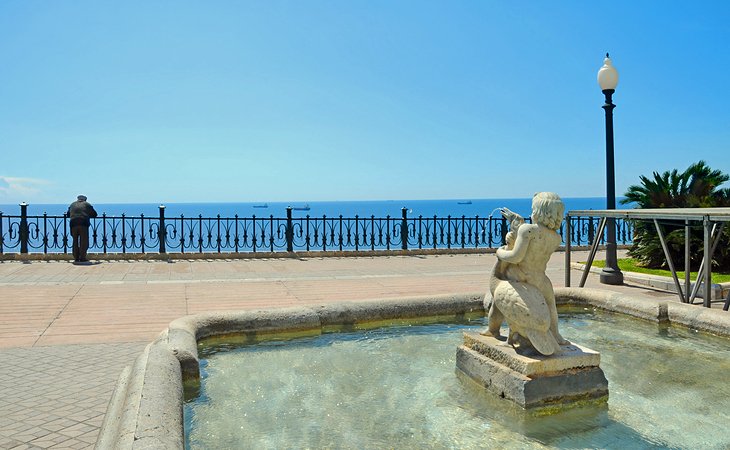
At the south end of the broad tree-lined Rambla Nova, Tarragona's main street, is the Balcón del Mediterráneo. From this spacious terrace, you can admire views of the Mediterranean Sea and El Milagro Beach.
A pedestrian staircase leads from the Balcón del Mediterráneo down to the railroad station and the harbor, and several promenades begin at the Balcón and follow the coastline to the beach.
The terrace and the paths that extend from the Balcón del Mediterráneo offer a multitude of photo opportunities. Continuing farther along the beach, the scenery becomes more rugged, providing a wide range of picture-perfect backdrops.
5. Museu Nacional Arqueològic de Tarragona
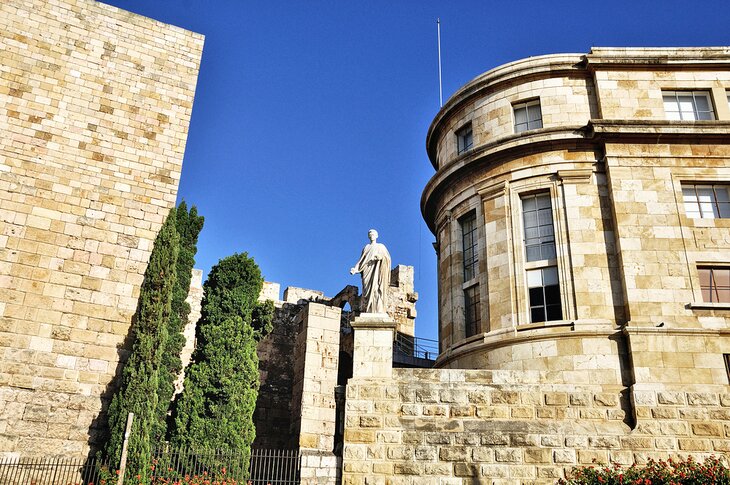
The National Archaeological Museum of Tarragona contains one of Spain's finest collections of ancient Roman art. The exhibits display antiquities from the town's archaeological sites, including a wide variety of ancient Roman sculptures, pottery, mosaics, and other artworks as well as sarcophagi and amphora.
Highlights of the museum's collection are the marble statues, coins of the Augustus period, and intricate floor mosaics. Not to be missed are the Medusa Mosaic (2nd-3rd century CE) and the highly detailed Mosaic of the Fish (3rd century AD), which depicts 47 different types of marine creatures known to live in the Mediterranean Sea.
Adjoining the Archaeology Museum is the massive Pretorio Romano (Roman Praetorium), the Roman general's residence. Built in the 1st century BCE, this immense tower is known as the Torreón de Pilatos because Pilate is believed to have been born here. A vaulted underground chamber links to a passageway, and the tower borders the Roman Forum, just behind it.
The National Archaeological Museum (on the Plaça del Rei) is currently closed to the public while the building is undergoing renovations. During the closure, the Tinglado 4 (on the Costa Wharf in the Port of Tarragona) presents several interesting exhibits from the museum.
Address: 5 Plaça del Rei, Tarragona
Read More: Best Places to Visit in Spain
6. Roman Forum

The Roman Forum is a monumental archaeological site (west of the Rambla Nova) that was the center of Tarraco, an ancient Roman city that flourished in the 1st and 2nd centuries CE.
This expansive site corresponds with a public square dating to around 30 BCE. The ruins reveal remnants of Roman houses, temples, shops, and establishments that once stood here. You can also see elements of an ancient basilica and traces of several streets of the Roman era.
Along with the Roman Amphitheater and other ancient Roman ruins in the area, the Roman Forum is designated as a UNESCO World Heritage Site.
Address: Calle Lérida, Tarragona
7. El Serrallo: An Old Fishing Village
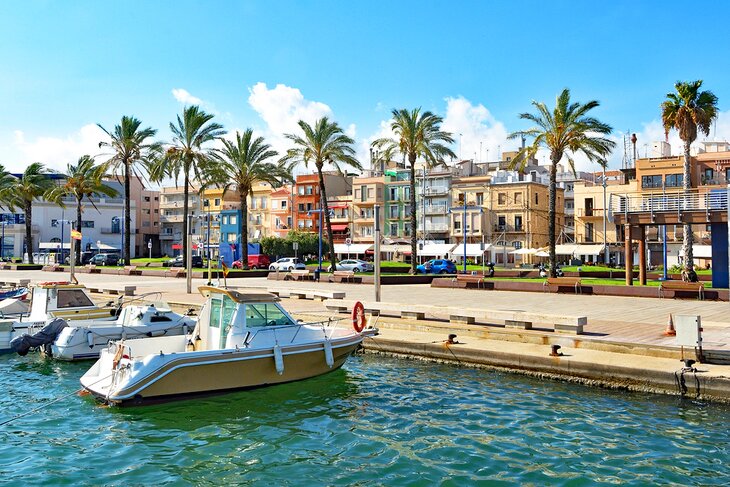
El Serrallo is the old fishing village at the heart of Tarragona. This area has retained its old-world charm, even though Tarragona developed into a modern city.
Go for a stroll along the pleasant seaside promenade in El Serrallo. You might like to stop for an authentic seafood meal. Numerous restaurants line the promenade.
Restaurant owners in El Serrallo shop at the local fish market to purchase fresh catches daily. Typical dishes include fresh cod dumplings, cuttlefish in its own sauce, and pataco (a hearty stew of potatoes, tuna, garlic, and almonds).
8. Casa Castellarnau
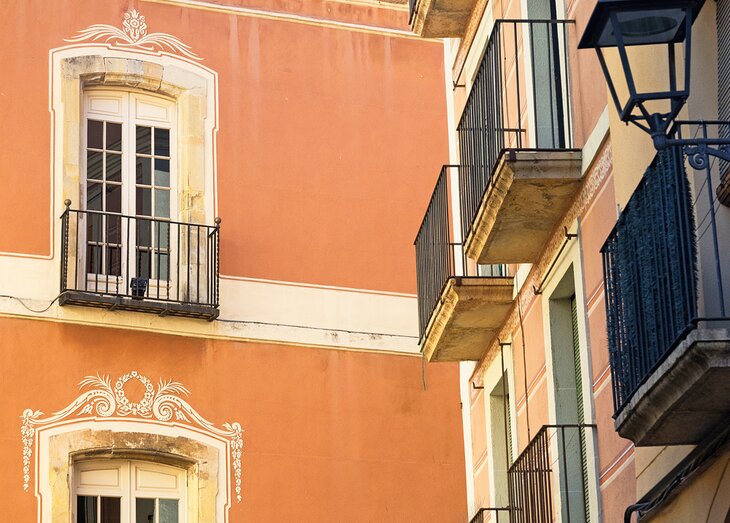
Casa Castellarnau was built in the 15th century for an influential aristocratic family, and generations of the family resided here until the 19th century.
This elegant palace reveals a melange of Gothic and Neoclassical architectural elements. Much of the furnishings are in the style of Queen Isabella II.
The most remarkable room of the palace is the ballroom, which features 18th-century ceiling frescoes depicting mythological scenes. The palace's interior patio and staircase with Gothic columns are also noteworthy.
Besides splendid architecture and interior decor, the Casa Castellarnau also presents archaeological and ethnographic exhibits from the Molas i Agramunt collection. The Casa Castellarnau is open Tuesday through Sunday.
Address: 14 Carrer dels Cavallers, Tarragona
9. Playa del Milagro
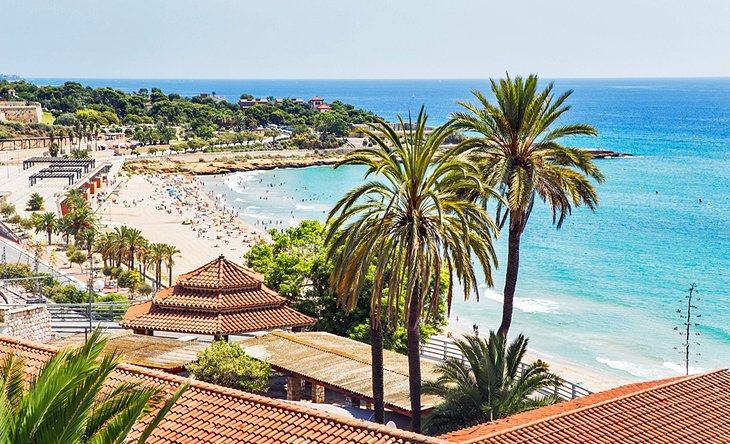
Tarragona's 15-kilometer coastline is prized for its beautiful sandy beaches. From the Balcón del Mediterráneo, scenic promenades lead to the beaches.
The main beach in Tarragona is Playa del Milagro, a wide sandy shore nearly one kilometer in length right in the center of town. Ruins of the Roman amphitheater can be seen in the background.
Ready to welcome visitors, the Playa del Milagro has public restrooms, showers, and an area for outdoor sports. El Milagro Beach, as well as the rest of Tarragona's public beaches, features signposts of water safety and other hazards, and the sand is groomed daily.
Read More: Top-Rated Beaches in Spain
10. Pretty Avenues and Public Squares
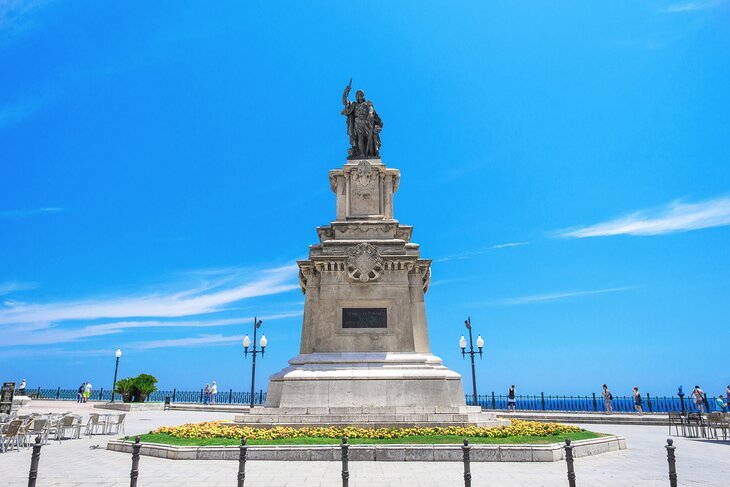
Leading to the Balcón del Mediterráneo is the Paseo de les Palmeres, a promenade with attractive palm-fringed terraces. In this delightful traffic-free space, pedestrians can take a stroll while soaking up the seaside ambience. Benches are well-placed in front of scenic viewpoints.
This avenue intersects with the Rambla Vella and halfway down this is the Plaza de la Fuente, a square on the site of the ancient Roman Circus. On the north side of the Plaza de la Fuente is the 19th-century Ayuntamiento de Tarragona (Town Hall).
While exploring the area around the Balcón del Mediterráneo, you should be sure to stroll down the lively Rambla Nova, which is full of things to do. This wide tree-shaded boulevard is lined with fashion boutiques, upscale jewelry stores, and locally owned artisan shops.
Along the boulevard are two noteworthy churches: the Baroque Iglesia de San Agustín and Iglesia de San Francisco.
11. Acueducto Pont de les Ferreres (Roman Aqueduct)
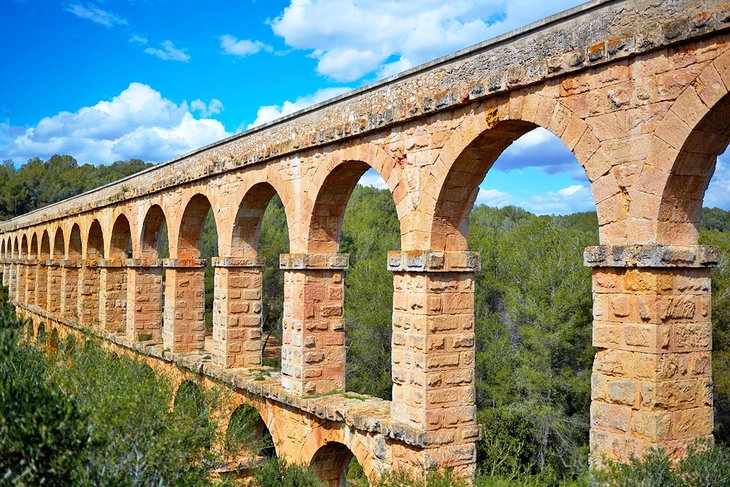
About four kilometers from Tarragona is the Acueducto Pont de les Ferreres, also known as the Puente del Diablo (Devil's Bridge) after a local legend.
The aqueduct was built during the era of Emperor Augustus and restored during the Moorish reign of Caliph Abd-al Rahman III. Originally, the structure extended for 25 kilometers in length.
All that remains now are ruins of a few hundred meters long and 27 meters high, however this is enough to appreciate the magnificent feat of engineering. Two rows of immense arches support the water channel that once carried water from the Francolí River.
Address: CN-240 de Valls a Lleida, 43006 Tarragona
12. Gaudí Centre in Reus
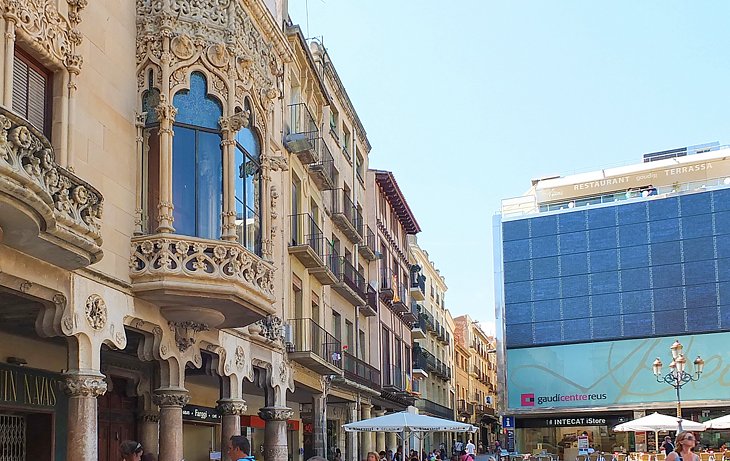
The town of Reus (10 kilometers from Tarragona) was the birthplace and hometown of celebrated Catalan architect Antoni Gaudí, who was a key figure in the Catalan Modernism movement. Gaudí was renowned for his fantastical and surreal architecture.
As a tribute to its famous native son, the town created an innovative interpretation center. The Gaudí Centre is the only one of its kind, with exhibits devoted to the life and works of Gaudí.
Through innovative displays and the latest audiovisual technology, the exhibits highlight the wonderful world of Gaudí. You will discover Gaudí's incredible creativity and the secrets of his genius.
Located at the heart of Reus, the Gaudí Centre is within easy walking distance from many cafés and restaurants. You can also wander the town of Reus to find Gaudí's birthplace on Calle Sant Vicenç and the church where he was christened, Sant Pere.
Reus is easily accessible from Tarragona by car or train. Most of Gaudí's architectural masterpieces are found in Barcelona, a city that boasts seven UNESCO-listed buildings created by Gaudí.
Address: 3 Plaça del Mercadal, Reus
13. Head to the Beach Resort of Salou
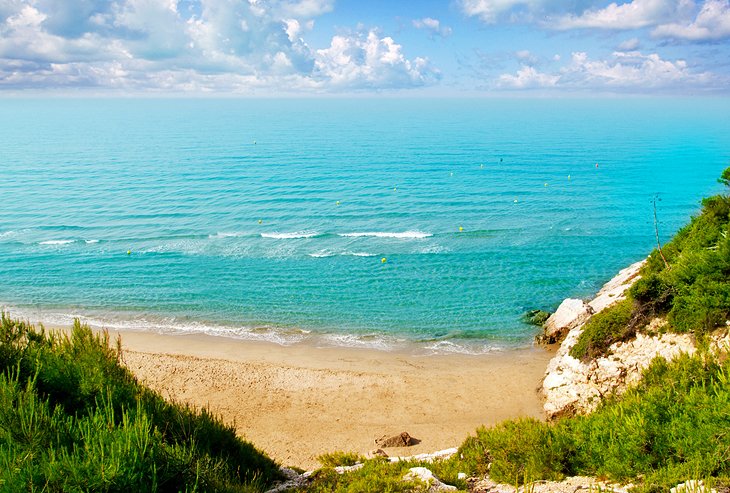
In a picturesque, sheltered bay 16 kilometers from Tarragona, Salou is a popular seaside resort that swells with visitors during summertime. Popular for its fine sandy beaches, as well as a boating harbor, Salou draws sunbathers and water sports enthusiasts alike.
The beaches of Salou are prized for their sandy shores and calm waters, ideal for swimming or wading. Also a historic town, Salou's claim to fame is that King Jaime I sailed from the town in 1229 on his expedition to conquer Majorca.
Several more excellent beaches along the Costa Dorada are easily accessible for those with a car. About 12 kilometers southeast of Tarragona, on the way to Salou, Playa de la Pineda is a lovely beach in a pristine natural setting.
Farther south, seven kilometers from Salou, is the quaint fishing village of Cambrils.
Where to Stay in Tarragona for Sightseeing
Luxury Hotels:
- Although it is located outside the city center, Hotel Mas la Boella is well worth the short ride into town, housed in historic buildings with lovely gardens. This charming 13-room boutique hotel has a fine-dining restaurant with a garden terrace and an outdoor swimming pool. Hotel amenities include room service, airport transfers, and guided tours.
- The Hotel SB Ciutat de Tarragona is found near the Plaça Imperial Tàrraco, a convenient hub for travelers with or without a car. This 4-star hotel features a rooftop swimming pool and hot tub, a fitness center, and on-site paid parking. The contemporary-style guest rooms have updated bathrooms with sleek modern fixtures. Room service is available.
- Near the Parc de la Ciutat, the 4-star AC Hotel Tarragona has a friendly front-desk staff and excellent amenities, including a breakfast buffet, restaurant, concierge, fitness center, and paid parking.
Mid-Range Hotels:
- The family-friendly Hotel Sant Jordi is just a block from the beach, providing guests with beach towels and chairs for convenience. Family rooms are available, and a continental breakfast is included.
- Another excellent place to stay for families is the Astari Hotel, close to Playa el Milagro for easy beach access and home to a large outdoor pool with ample seating. This bright, modern hotel has a poolside restaurant and spacious guest rooms and family suites.
- The 3-star Hotel SB Express Tarragona is situated next to Torre dels Vents monument and overlooks Placa de les Corts Catalanes. The hotel boasts soundproofed rooms, a café with an outdoor patio, and a sauna. In the morning, the café offers coffee and a breakfast buffet.
Budget Hotels:
- Affordable accommodations are available at the Hotel Pigal, known for its hospitable owner and simple, sparkling clean guest rooms. The hotel is ideally located within easy walking distance to the beach. Amenities include a 24-hour front reception desk and baggage storage. A breakfast buffet is available.
- In the historic center of Tarragona, the Hotel Plaça de la Font is conveniently located just steps from the Circ Roma and Casa Castellarnau and is close to several restaurants. The hotel offers a 24-hour front reception desk, concierge services, a lounge, and a gourmet restaurant that serves Mediterranean cuisine. Guest rooms feature cheerful decor and updated bathrooms.
- An excellent value for the price, the 3-star Hotel Canada offers basic but comfortable guest rooms with air-conditioning. Amenities include a 24-hour front reception desk and parking, as well as an on-site café and a restaurant that's open for dinner. The hotel is located within reasonable walking distance from Tarragona's most popular tourist attractions.
Map of Attractions & Things to Do in Tarragona
More Related Articles on PlanetWare.com
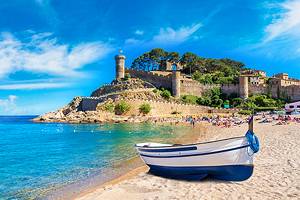
The Mediterranean Coast: Tarragona is one of the top destinations along the Mediterranean coast, where you can find several of Spain's most popular beaches. Farther south along the coast is Valencia, with tourist attractions that range from historic landmarks to the innovative City of Arts and Sciences. The balmy town of Alicante boasts fine-sand beaches and historic attractions.
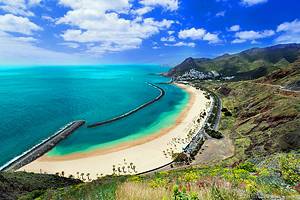
Sunny Islands: For practically unlimited beach choices, head to one of Spain's many islands, like the Balearic Islands in the Mediterranean Sea. The largest of these is Majorca, well-known for its beach resorts, charming villages, and historic landmarks like castles and churches. Far from the Mediterranean, off the northwestern coast of Africa, the Canary Islands have a year-round beach season thanks to their position in the subtropics, and they are particularly popular with British and northern European travelers.
